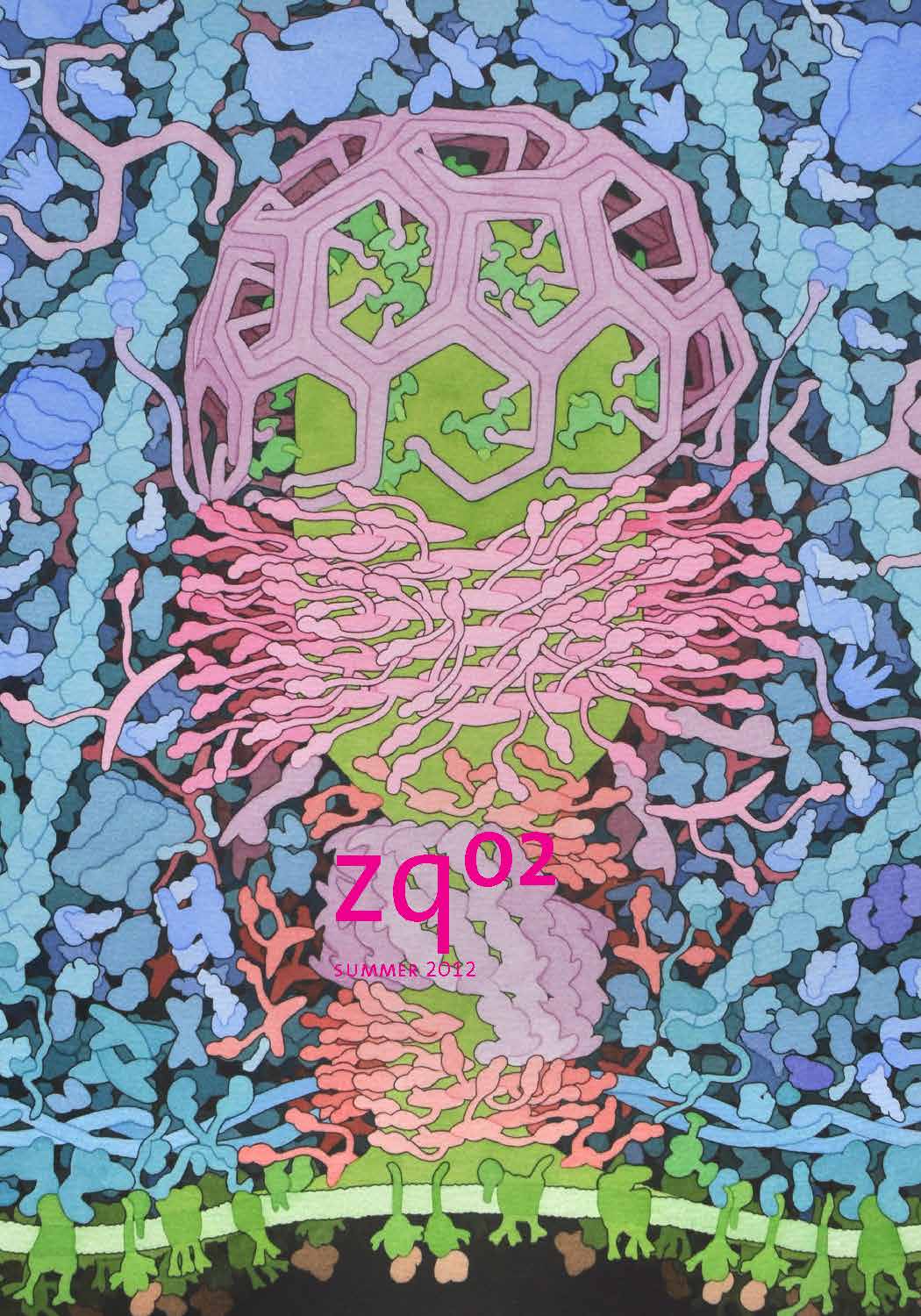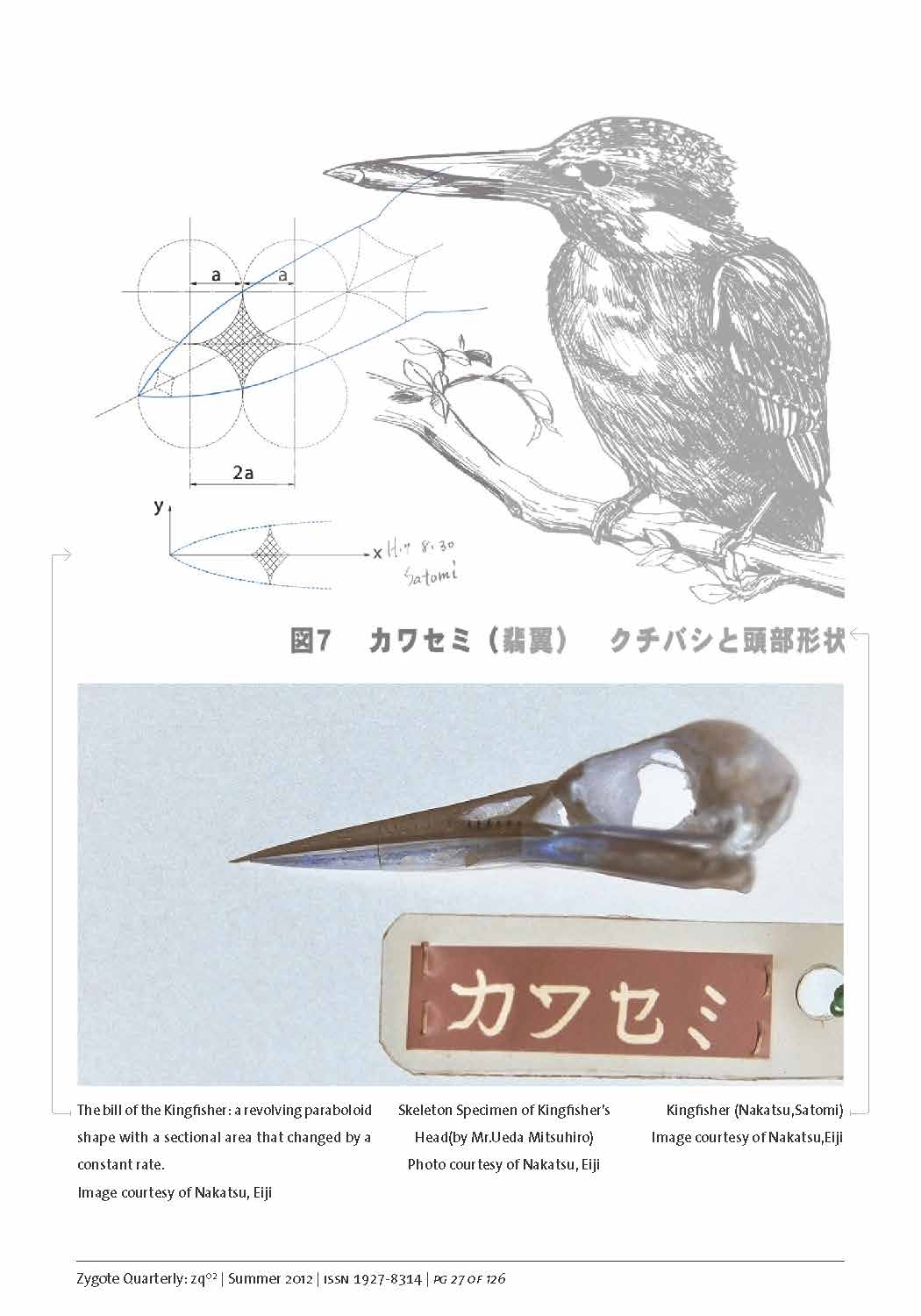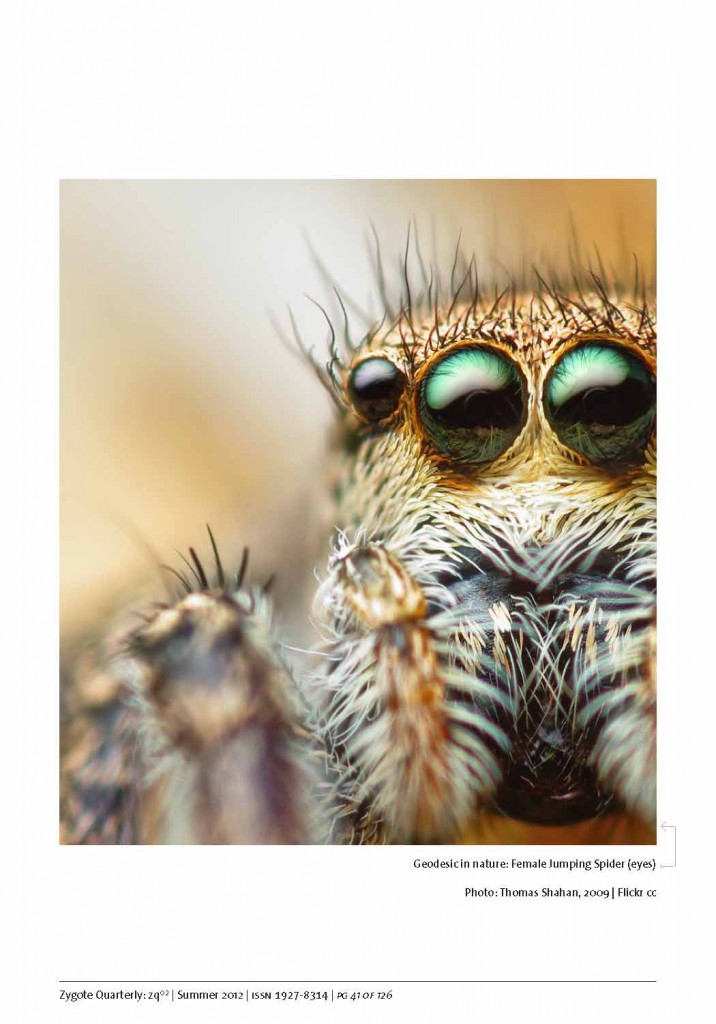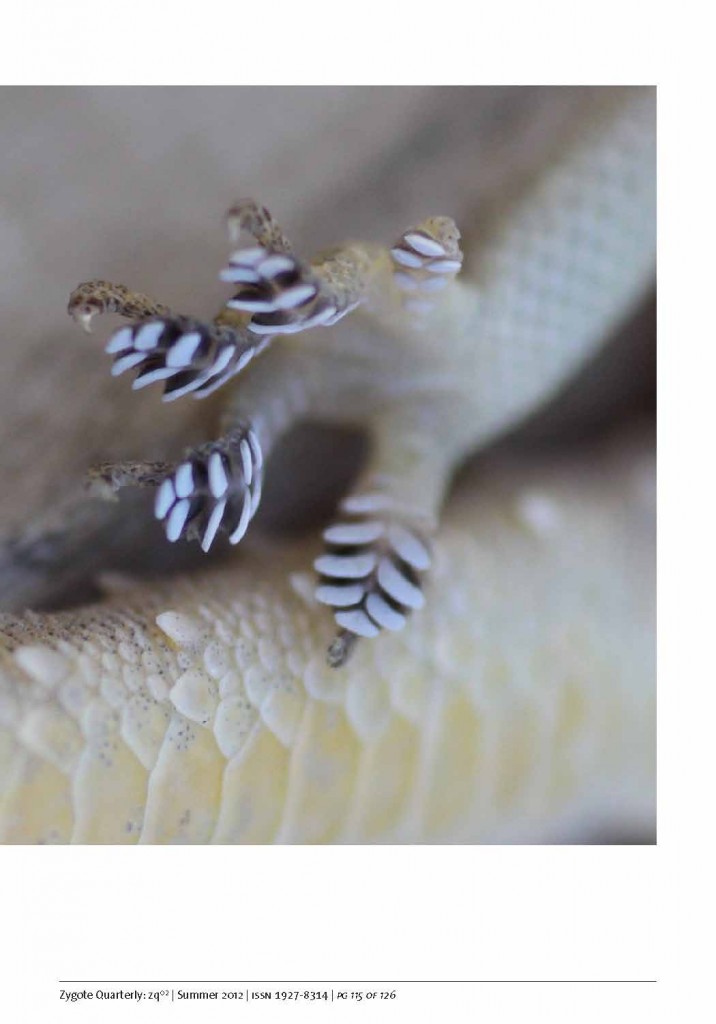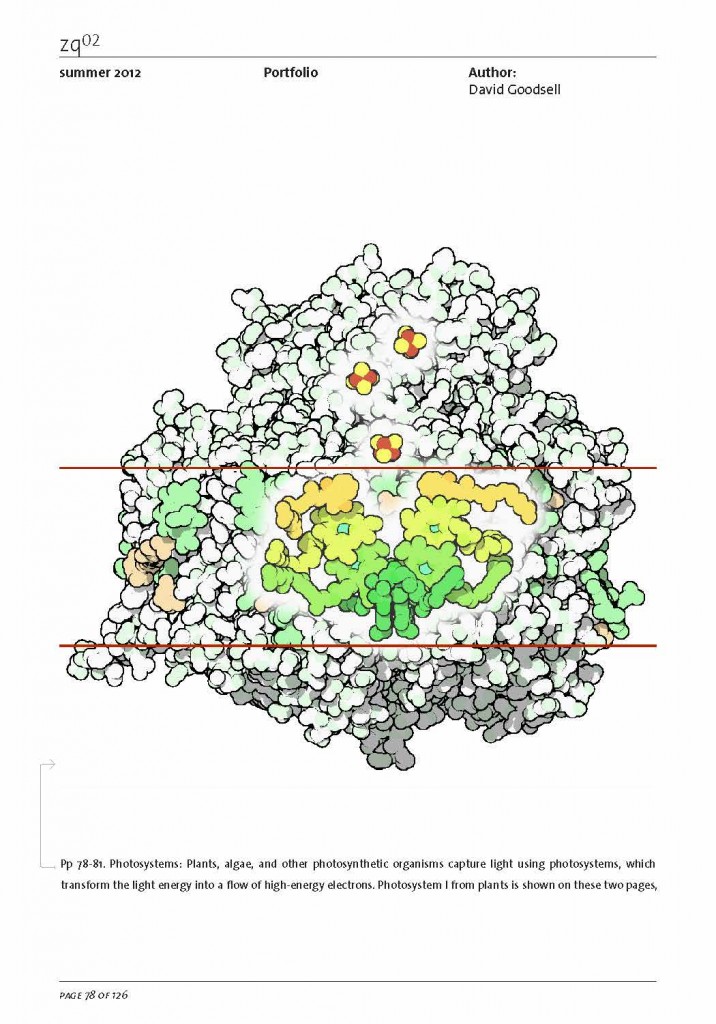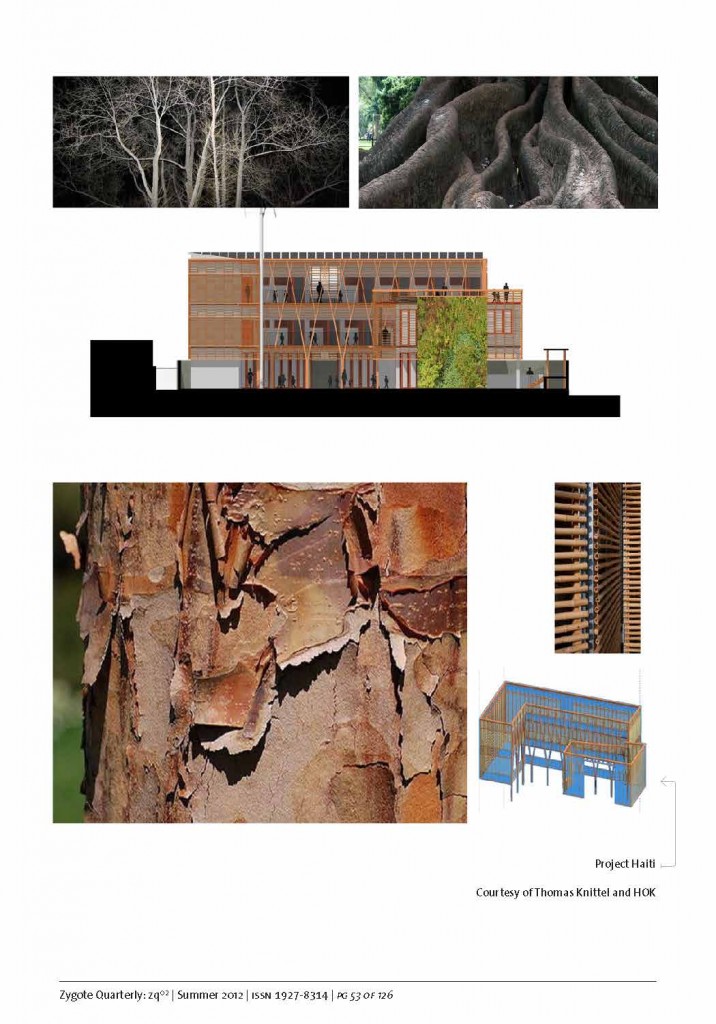The latest issue of Zygote Quarterly, an online journal with a focus covers Bio-inspired design, and offers another opportunity to explore this topic (and the back issues as well). A really beautifully illustrated online magazine, ZG is worth delving into in depth, but also sitting back and and in this case, getting into a bit of depth on the topic.
An essay that gets me excited about the concept is the opener from Tom McKeag, Case Study Auspicious Forms, which tracks the process of engineering a Japanese bullet train to attain high speeds with less noise on the track and when entering tunnels. The breakdown of process looking both at the serrated wings of owls in creating ‘quiet’ air flow, to the specific beak orientation of a Kingfisher influencing nose shape to lessen sonic booms in tunnels is a fascinating exploration of how traditional engineering can look to nature for solutions. The concept of natures patterns applied to the unnatural is the major benefit of bio-inspired design.
The nature inspired engineering is relevant to Buckminster Fuller and the application synergistic patterns, and notably his calling card, the ultimately scalable and strong modular geodesic structure. These geodesic structures area also found in nature, such as the eyes of insects (below) or the bones of birds – nested, scalable triangular structures that can be combined build infinite structures with stability and strength far greater than their perceived mass. As mentioned, Fuller the biological provides not a pattern to mimic but the answer:
“Unlike many biologists, Bucky insisted that his “energetic-synergetic geometry” was ‘natural’ in the sense that it was there, all worked-out, as a mathematical principle employed by Nature to give optimum advantage to the system.”
Fuller would be ones of the forerunners, obviously, of biomimicry, due to his understanding and application of natures rules and strategies. This continued a long-line of thinkings throughout history who have looked to nature to inspire them, such as Leonardo da Vinci, or Antonio Gaudi, to name a couple. The engineering/product angle is what i think is most applicable and successful biomimicry path, with the gecko-foot inspired fasteners (above) being perhaps the touchstone of that nature to useful product transition.
Outside of the realm of the mimic is the concept of blending of art and science, which is captured perfectly in the work of and featured prominently throughout ZG such as the biological art of David Goodsell, who captures scientific processes in beautiful and simple illustrations.
The challenge then lies in the differentiation of the biological (ecological) from the biomimicry and the bio-inspired, all of which inform and apply to design but existing in gradations from actual nature to abstract nature. The one essay that focuses more on the design side is an interview with Thomas Knittel from HOK, a firm that has been intimately nested in the Biomimicry world more than most firms. His work on Project Haiti, below, is indicative of the bioinspired approach. “Bio-inspiration is in the variable second skin forming a building boundary layer to reject heat and harness natural ventilation. A wooden branching support structure facing the courtyard is based upon patterns in nature and observed by da Vinci and Fuller and, more
recently, Bejan’s constructal law. I will admit our solution is not pure, but it serves the building
functionally and metaphorically. What better place to display mother-daughter branching?”
The other notable element that HOK has done is the Genius of Biome design resource, which desribes “…how lessons from the temperate broadleaf forest biome, which houses many of the world’s largest population centers, can inform the design of the built environment.”
Additional essays touch on topics such as Biomemetics, the connections between Engineering and Biology, and additional study on Bucky Fuller and his nature-inspired design strategies, but i will leave you to explore on your own.
Perhaps because these essays aren’t trying to over-reach and frame Biomimicry as a new approach to landscape ecological design and urbanism, they are more inspirational and less frustrating in this way. Can biomimicry really truly be a methodology for landscape architecture and ecology? I’m not sure, as the medium and the method are too closely aligned to make the jump to mimesis – so perhaps the concept of ‘bio-inspired’ is perhaps a better metaphor with less baggage, and a truer sense of the concept of design with nature.
